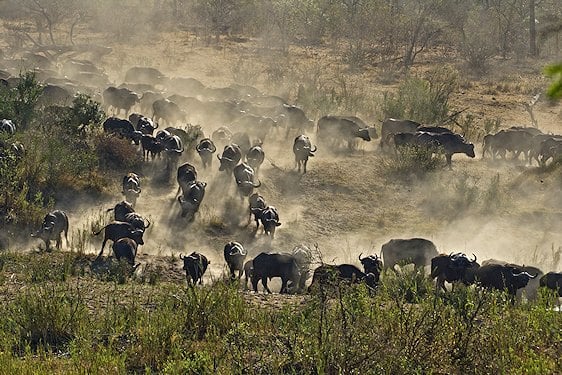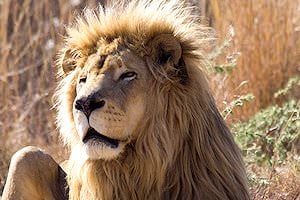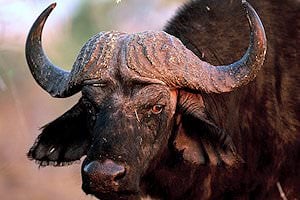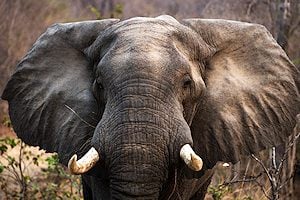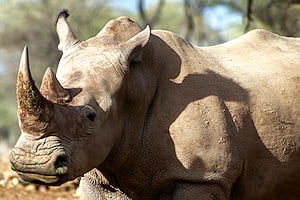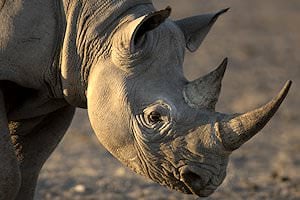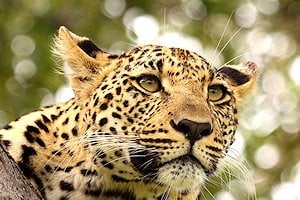Large Spotted Genet
The large spotted genet is endemic to Africa. Visitors to Kruger Park and the private reserves that form part of it often spot these critters on night safaris.
Need Advice?- Home
- >>
- African Travel
- >>
- South Africa
- >>
- National Parks
- >>
- Kruger National Park
- >>
- Mammals
- >>
- Large Spotted Genet
Description
Genets are some of the lesser-known cat relatives found in Africa. They have a very slender build and long tails, which enables them to swiftly and agilely move between trees and through thickets.

They occur in most of South Africa and parts of Zambia, Zimbabwe, and Mozambique. In Botswana and Namibia, their range is limited. Their range excludes the Kalahari and Namib Deserts and the Karoo semidesert in South Africa.

Status
Large Spotted Genets, like many other species protected in the Kruger National Park, are considered common and labeled accordingly as least concern. The limitless supply of insects and fruits to forage, or small prey species enables them to live in many African habitats. It is one of the most significant factors that favor them in the epic race for survival in Africa. Their population trend shows that their populations are stable going into the future.

Habitat
In South Africa, they are found in the fynbos areas of the Western Cape and near grasslands or woodlands, preferring the environments found on the edge of these areas. Here they hunt and forage for food in many different shapes and forms. Smaller mammals and reptiles, including rodents and small primates or lizards, are favorite prey, while insects, scorpions, and spiders are dug from beneath the ground or taken from the bottom of tree stumps and rocks.

Social Organization
Males and females live separately for the most part. Occasionally, small groups of females and their offspring occur, but they rarely stay together for more than six months. Genets are considered solitary animals, with some home ranges of opposite sexes overlapping. Males often defend these home ranges but aren’t regarded as territorial animals. The size of home ranges are usually as large as 5 square kilometers in some parts but can vary drastically and be nearly half that.
Finest Safari Areas in Africa for Encountering Large Spotted Genet
We recommend the following National Parks and Private Reserves for the best chances of spotting the large spotted genet on safari game drives and bush walks.

Social Behavior
They utilize scent marking as a form of communication. They can convey or communicate complex messages by leaving urine, feces, or scent gland secretions for others to find and decode. They can determine many things this way, such as whether the individual in question is part of their family unit and the sex of others. They regularly and repeatedly mark areas, sometimes around 60 times daily.

Reproduction
Courting male genets often follow females around once she goes into heat. She might initially reject or ignore him and even flee, but persistence pays off. Once she has conceived, a gestation period of between seventy and seventy-seven days ensues before a litter of 2 to 3 little kittens are born. Once females mature physically and sexually at around two years, they can produce young consistently, usually twice in one calendar year. The mortality rate is relatively high, with only about 30% surviving.

Anti-Predator Behavior
Genets release anal sac secretions when threatened, which may repel their attackers and give them time to escape. They also respond defensively by arching or rounding their back and lifting their hair to make them seem bigger. Various vocal calls, grunts, and growls inform others and are attempts to scare off attackers. When all else fails, they flee into the surrounding cover or trees, using their low center of gravity and agility to outrun whomever they face.


